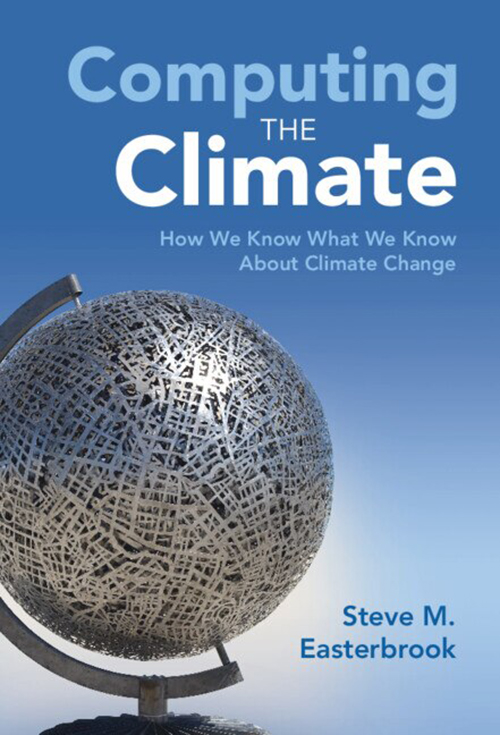“I came to U of T in 1999,” says Steve Easterbrook. “My partner and I had just started a family, we became very busy with young kids, and it was around this time that I started thinking about their future and how my research might affect them.”
Easterbrook is director of the School of the Environment and a professor in the Department of Computer Science in the Faculty of Arts & Science. Throughout his career, he has been interested in the role computer science and software engineering have to play in understanding and combatting global climate change.
The research questions he eventually decided to tackle were a natural progression from the work he’d done in a previous job as lead scientist at NASA’s software verification research lab where he and his team studied flight software for the Space Shuttle and International Space Station.
Easterbrook decided to investigate how climate models — computer programs or simulations — that describe our warming atmosphere work and how well they work. In other words, how do we know we can trust the predictions about climate change they make?
Climate models are computer programs that simulate the Earth’s atmosphere. Typically, they divide the atmosphere and oceans into three-dimensional blocks, some as small as 30 by 30 kilometres. Mathematical equations simulate the flow of energy, air, moisture through the atmosphere, as well as how the atmosphere interacts with the oceans and land.
To conduct his research, Easterbrook visited climate change labs around the world, including the Meteorological Office in the U.K.; the Max Planck Institute for Meteorology in Hamburg, Germany; the National Center for Atmospheric Research (NCAR) in Boulder, Colorado; and the Institut Pierre-Simon Laplace (IPSL) in Paris, France.
Easterbrook saw firsthand that climate models work very, very well. They show with remarkable accuracy how the atmosphere works over long periods. They have provided accurate predictions of the dire consequences of pumping carbon dioxide into the atmosphere for over a century — even models that predated the modern computer, like that of 19th century Swedish chemist Svante Arrhenius, were accurate.
And how is it that they’re so incredibly trustworthy? According to Easterbrook’s research, it’s because they’re the result of a rigorous global collaborative effort on the part of hundreds of scientists across many disciplines. They are more reliable than most software because, for example, commercial software is typically the product of a single, relatively small team’s efforts. Commercial software is tested — but not with the rigour or thoroughness applied to climate models.
Easterbrook describes his quest to answer these questions in his new book, Computing the Climate: How We Know What We Know About Climate Change (Cambridge University Press, 2023).
As he writes in the introduction about his goals for Computing the Climate: “I hope to take something that’s normally invisible — a complex piece of computer software — and make it understandable. I hope to convince you that a science based on simulation models makes sense and produces valid results. And I hope to give you a sound basis to judge for yourself whether a computer projection for the Earth’s climate for the rest of this century is believable.”
We should believe these models, he writes, because “climate modelers have built a remarkable set of design and testing practices that look quite unlike anything I've observed in commercial software companies. If you have a large enough community of experts who run the models over and over again, treating each run as though it were a scientific experiment, treating every quirk of the model with the utmost suspicion, it's possible to produce remarkably high-quality software. The result is a quality control process that I believe is unique in the world of computational modeling.”
Easterbrook likes to show an impressive model developed by the NCAR as an example of how well they work. The model’s output appears as a moving “map” of the world, showing land masses, oceans, clouds, air circulation and precipitation, and looks very similar to animated satellite images. The model correctly simulates details like the daily pulse of rainfall in the Amazon basin and in sub-Saharan Africa, as well as typhoons forming in the western Pacific and crashing into Japan and China.
Says Easterbrook, “None of the patterns you see in this model are directly programmed into it, none are written in the code. It shows that if you get the physics right, the rotation of the planet, the heating from the sun and cooling off at night, and you run that simulation — these patterns emerge. And they match the planet’s real patterns. That blows my mind.”
Watch a high-definition animation of global air circulation:
Credit: Community Climate System Model (CCSM) and NCAR.


